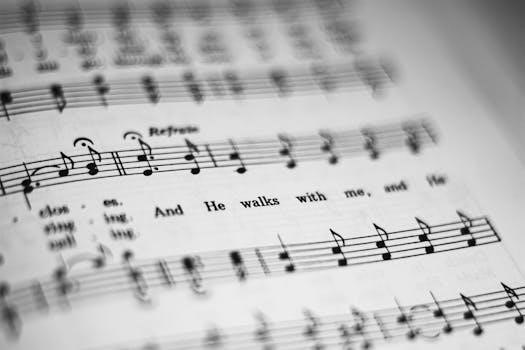The phrase “Ave Maria” is Latin for “Hail Mary,” a significant prayer in the Catholic and Orthodox traditions. It’s also known as the opening words of the traditional prayer to Mary. The prayer asks for her intercession. The Ave Maria is a popular classical song that is used across different cultures.
The Significance of Ave Maria
The Ave Maria holds immense significance as it is the Latin rendition of the Hail Mary prayer, a cornerstone of Catholic devotion. Its importance is rooted in its biblical origins, with the first half derived from the angel Gabriel’s greeting to Mary. This sacred text is a revered call for Mary’s intercession. Few hymns can rival the Ave Maria for its sublime lyrics, which are seen as divinely inspired. The prayer’s use in both liturgical and personal contexts underscores its enduring spiritual power. The Ave Maria, therefore, represents a profound expression of faith, hope, and reverence for the Virgin Mary. It continues to resonate deeply, crossing time periods and cultures through musical interpretations. This prayer is a powerful expression of devotion for millions of people worldwide, serving as a bridge between the divine and the human. It is a testament to the enduring power of faith.
The Latin Lyrics of Ave Maria
The Ave Maria’s Latin text is a traditional prayer. The prayer begins with “Ave Maria, gratia plena,” meaning “Hail Mary, full of grace.” This is a common and well-known prayer within the Catholic faith.
Traditional Latin Text
The traditional Latin text of the Ave Maria is a cornerstone of Catholic prayer and sacred music. It begins with the angel Gabriel’s greeting to Mary⁚ “Ave Maria, gratia plena, Dominus tecum.” This translates to “Hail Mary, full of grace, the Lord is with thee.” The prayer continues with “Benedicta tu in mulieribus, et benedictus fructus ventris tui, Iesus,” meaning “Blessed art thou among women, and blessed is the fruit of thy womb, Jesus.” The second part is a plea for intercession⁚ “Sancta Maria, Mater Dei, ora pro nobis peccatoribus, nunc et in hora mortis nostrae. Amen.” This translates to “Holy Mary, Mother of God, pray for us sinners, now and at the hour of our death. Amen.” This text is used in countless musical settings, becoming a staple of both liturgical and classical repertoire.
Variations in Latin Lyrics
While the traditional Latin text of the Ave Maria is widely recognized, variations exist, particularly in musical settings. Some versions may slightly alter the phrasing or repeat certain lines for musical effect. For instance, you might find repetitions like “Maria, gratia plena” or “Ave, Ave Dominus” to fit the melody. These are not changes to the core meaning but rather adaptations for artistic expression. Additionally, some composers might choose to emphasize particular phrases or words to enhance the emotional impact of the piece. These minor variations contribute to the rich diversity found in different renditions of the Ave Maria, demonstrating how the same sacred text can inspire a multitude of musical interpretations while maintaining the prayer’s essence.

Ave Maria and Franz Schubert
Franz Schubert’s “Ave Maria,” originally “Ellens Gesang III,” is a well-known musical setting of the prayer. His composition is often adapted with the Latin text, making it suitable for church services.
Schubert’s “Ellens Gesang III”
Franz Schubert’s “Ellens Gesang III,” also known as “Ave Maria,” was not initially intended as a liturgical piece. Instead, it was part of a song cycle, based on a German poem from Walter Scott’s “The Lady of the Lake.” The original lyrics told the story of a frightened girl, Ellen, praying to the Virgin Mary for help. Despite its non-religious origins, the melody’s beauty and expressive power quickly gained popularity. This prompted the adaptation of the music with the Latin text of the traditional “Ave Maria” prayer. The piece’s widespread appeal and its connection to the Virgin Mary made the transition to a sacred setting quite natural. The original German lyrics tell a slightly different story. This has resulted in two well-known versions of the same melody.
Adaptation to the Latin Prayer
The immense popularity of Schubert’s “Ellens Gesang III” led to its adaptation with the Latin text of the “Ave Maria” prayer. This adaptation was not originally conceived; rather it was a natural progression driven by the music’s inspirational and devotional qualities. The melody’s inherent beauty and solemnity made it a perfect fit for the sacred text. This transformation allowed the piece to be used in liturgical contexts, further cementing its place in both classical music and religious traditions. The Latin version became so widespread that it often overshadows the original German lyrics. The fusion of Schubert’s melody with the “Ave Maria” prayer has created one of the most iconic and recognizable musical settings. Today it is frequently performed in churches and concert halls alike, and it is associated with the traditional Latin prayer.

Ave Maria in Music
The “Ave Maria” has been set to music by numerous composers, with Franz Schubert’s version being the most well-known. Its melody is used in many classical music pieces and is a popular choice for performers.
Popularity and Performance
The “Ave Maria,” particularly Schubert’s rendition, has achieved immense popularity across diverse musical genres and cultural landscapes. It is frequently performed by vocalists, both classical and contemporary, in concerts and recitals. The piece’s emotional depth and melodic beauty have made it a favorite for various occasions, from solemn religious services to personal reflections. Its adaptability is evidenced by the fact that many artists have interpreted it over the years, with each bringing a unique style and emotion. The song’s enduring appeal has cemented its place in the standard repertoire of many musicians. The Latin lyrics contribute to its timeless quality, making it suitable for a range of performances. The song has been recorded in many versions across different countries.
Other Musical Settings
While Franz Schubert’s “Ave Maria” is perhaps the most widely recognized musical setting, numerous other composers have also created their own interpretations of the “Ave Maria” prayer. These diverse settings range from the works of Johann Sebastian Bach and Charles-François Gounod to pieces by contemporary artists. Each musical setting is unique, reflecting the composer’s individual style and the specific intent of their composition. The varied renditions demonstrate the prayer’s versatility and its enduring appeal as inspiration for musical expression. The “Ave Maria” has been set to music across different periods, each reflecting the musical language of its time. Some settings are for solo voice, while others are for choirs or instrumental ensembles, showcasing the many ways the prayer can be interpreted through music.

Ave Maria in Liturgical Context
The Ave Maria, a traditional Catholic and Orthodox prayer, is frequently used in liturgical services. It is a prayer calling for the intercession of Mary, the mother of Jesus, and is an integral part of Catholic worship.
Use in Church Services
The Ave Maria, deeply rooted in Catholic and Orthodox traditions, holds a significant place within church services. It is a prayer often recited or sung during various liturgical moments, reflecting its importance in religious practice. Its use spans across different parts of the Mass, from devotional moments to more solemn occasions. The Ave Maria’s presence in church services underscores its role as a plea for Mary’s intercession, a core belief in many Christian denominations. The prayer’s universal recognition also makes it a common element in ecumenical settings. The Ave Maria is used in services during communion, in personal prayer time and in special ceremonies. Its versatility and powerful message contribute to its continued use in the church. Its calming melody and prayerful words make it a beloved component of many church services around the world.
The Hail Mary Prayer
The Hail Mary, known in Latin as “Ave Maria,” is a foundational prayer in the Catholic tradition. It’s a supplication to Mary, the mother of Jesus, seeking her intercession. The prayer combines scriptural passages with a plea for her guidance and support. The first part of the prayer comes from the Angel Gabriel’s greeting to Mary, as recorded in the Gospel of Luke. The second part is a plea for her to pray for the faithful, now and at the hour of death. This prayer is recited in personal devotion, in church services, and on the rosary. The Hail Mary stands as a central element in Catholic piety, reflecting the deep reverence and respect for the Virgin Mary. It is one of the most popular prayers that is used by Catholics all over the world for guidance and strength. The prayer is not only used by Catholics but by other denominations as well.

Ave Maria and its Meaning
The Ave Maria translates to “Hail Mary,” a prayer asking for the Virgin Mary’s intercession. It is a call for spiritual support and divine grace. It holds deep cultural and religious significance.
Translation and Interpretation
The Latin phrase “Ave Maria” translates directly to “Hail Mary” in English, serving as the opening salutation of the prayer. The subsequent lines, “gratia plena, Dominus tecum,” mean “full of grace, the Lord is with thee.” This initial part of the prayer is derived from the angel Gabriel’s greeting to Mary in the Bible, emphasizing her blessed status; The phrase “Benedicta tu in mulieribus” translates to “blessed art thou amongst women,” affirming her unique role. Following this, “et benedictus fructus ventris tui, Iesus,” means “and blessed is the fruit of thy womb, Jesus,” highlighting the significance of her son. The latter part, “Sancta Maria, Mater Dei, ora pro nobis peccatoribus,” means “Holy Mary, Mother of God, pray for us sinners,” calling upon Mary’s intercession, “nunc et in hora mortis nostrae,” which is “now and at the hour of our death.” This concludes with “Amen,” signifying acceptance. The prayer’s text is a combination of scriptural verses and a plea for Mary’s intercession.
Spiritual and Cultural Significance
The “Ave Maria” holds profound spiritual significance within Christianity, especially in the Catholic Church, where it is a core prayer and devotion. It is not only a prayer but also serves as a representation of faith, invoking the intercession of the Virgin Mary, considered the Mother of God. This prayer is a fundamental aspect of Catholic life, used in personal devotion and liturgical settings. Beyond its spiritual role, “Ave Maria” has permeated into many cultures, becoming a well-known piece of music and art. Its melody has been adapted by numerous composers, most notably Schubert, making it a staple in classical music. The prayer is also culturally important as a symbol of peace, hope, and reverence. Its use extends beyond religious practices, with many secular adaptations and performances, showcasing its universal appeal and emotional resonance. The cultural impact is significant.
